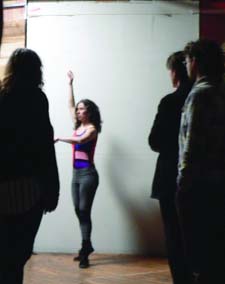Exploring Experimental Dance of AUNTS with Its Directors

Jessica%20Ray%20by%20Laurie%20Berg_2.jpg
Stern Interviews Dirks-Goodman and Berg at Luluc in Cobble Hill
By Carrie Stern
My first encounter with AUNTS was recorded in a May 3, 2007, Eagle column. Jmy Leary (who at the time went by Jamm) and Rebecca Brooks, with Biba Bell and others, had started producing multi-disciplinary performance experiences in which audience and performers were equally important, where artists of many levels of experience performed alongside each other. Events had the quality of early 70s happenings.